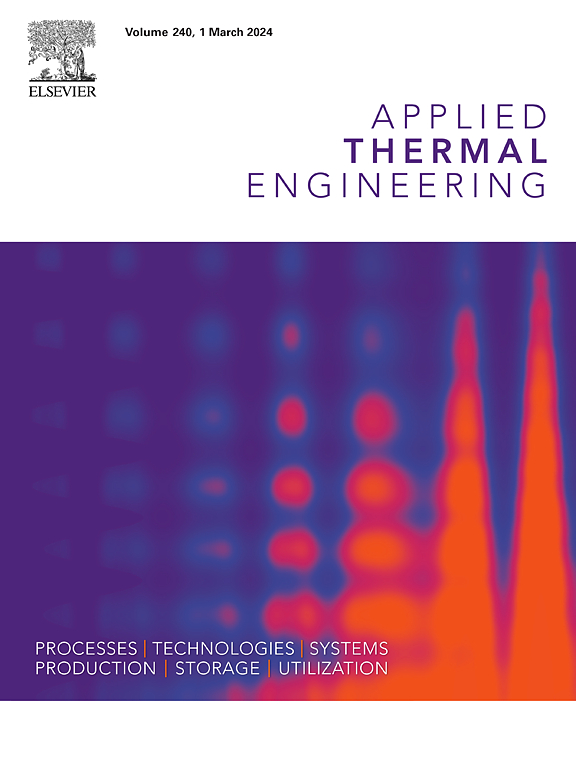Flow and thermochemical dynamic characteristics in calcium-looping energy storage
IF 6.1
2区 工程技术
Q2 ENERGY & FUELS
引用次数: 0
Abstract
Calcium looping-thermochemical energy storage (CaL-TCES) based on dense particle flow is a promising technology for large-scale long-duration energy storage and industrial decarbonization. However, Energy-mass conversion transfer characteristics in the CaL-TCES fluidized bed reactor are unclear. In this study, the fluidization and thermochemical behaviors in the CaL-TCES reactor are investigated, using Computational fluid dynamics-discrete element method (CFD-DEM) coupled with comprehensive heat transfer and inhomogeneous reaction models. Moreover, the effects of process parameters on particle dispersion, heat transfer and thermal storage performance are systematically explored. The results show that wall-particle conduction and radiation are main heat transfer modes in wall zone, which dominates heat transfer pathway of the reactor, while central zone is governed by reaction heat and radiation. The reaction magnitude and homogeneity are significantly affected by particle temperature and CO2 partial pressure. High temperature in bubble phase and low partial pressure at the reactor bottom induce them to become reaction hotspots. Moreover, gas velocity has more pronounced effects on particle dispersion than particle size and wall temperature. Compared to other gas velocities, 2.5 times the fluidization number not only achieves a balance between temperature and reaction uniformity but also offers high heat transfer coefficient, thermal efficiency and energy storage density. Small particles and low-temperature environments promote efficient and uniform heat transfer, while large particles and high-temperature environments enhance energy storage density. This study provides valuable guidance for optimizing reactor design and operation to achieve high heat transfer and thermal storage efficiency in fluidized bed reactors.
求助全文
约1分钟内获得全文
求助全文
来源期刊

Applied Thermal Engineering
工程技术-工程:机械
CiteScore
11.30
自引率
15.60%
发文量
1474
审稿时长
57 days
期刊介绍:
Applied Thermal Engineering disseminates novel research related to the design, development and demonstration of components, devices, equipment, technologies and systems involving thermal processes for the production, storage, utilization and conservation of energy, with a focus on engineering application.
The journal publishes high-quality and high-impact Original Research Articles, Review Articles, Short Communications and Letters to the Editor on cutting-edge innovations in research, and recent advances or issues of interest to the thermal engineering community.
 求助内容:
求助内容: 应助结果提醒方式:
应助结果提醒方式:


